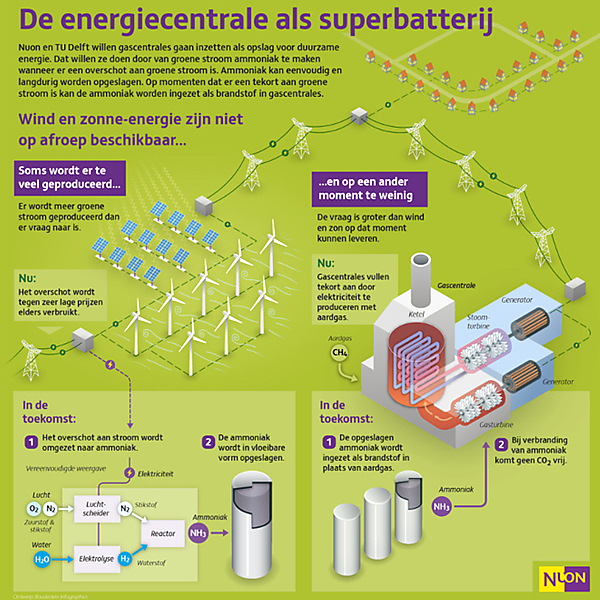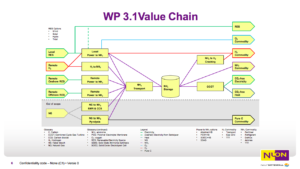Nuon’s Power-to-Ammonia update, and the first European ammonia fuel conference in 2017
By Trevor Brown on December 02, 2016

An article in the latest issue of Dutch-language magazine NPT Proces Technologie provides a detailed update on the Nuon project, about which we wrote a few months ago. Nuon’s Power-to-Ammonia project looks at grid-scale storage of “seasonal surplus” electricity from wind and solar in the form of ammonia.
Proton Ventures, the originators of the Power-to-Ammonia concept in The Netherlands, have also been sharing details of the project in recent conference presentations – and announced that they will be hosting the first European ammonia fuel conference, in Rotterdam, in May 2017.
In case you read Dutch, although NPT’s article is for subscribers, Proton has made it available in two PDFs (part 1 and part 2).
The Nuon project sees ammonia as a “superbattery” that stores excess renewable power at large scale over long periods. One of the project partners, the ISPT explains:
Currently it is impossible to store large quantities of wind and solar power. This means that this sustainable energy cannot be given any use when there is a large supply … Nuon is researching what possibilities there are to convert the oversupply of sustainable energy into ammonia. The ammonia produced using sustainable energy can later be used as a fuel in the power plant which emits no CO2.
ISPT (Institute for Sustainable Process Technology), Power 2 Ammonia project

In a dinner presentation at the NH3 Fuel Conference in September 2016, Proton Ventures’ Director, Hans Vrijenhoef, illustrated the economics of various energy storage technologies, and – crucially – the time horizons at which they are competitive.
(We’ve seen very similar charts before, and we’ll see yet more soon.)
In approximate numbers, energy storage in quantities exceeding 100 GWh, for any time greater than one hour, is most economically achieved using ammonia.

Vrijenhoef also addressed the main session of the NH3 Fuel Conference to provide greater detail on Proton’s work, and presented a table comparing the costs of production, distribution, and storage of hydrogen and ammonia – calculating the costs of each in terms of their hydrogen content.
While the cost of producing ammonia is 25% above the cost of producing hydrogen, distributing and storing ammonia is significantly cheaper: just 10% the cost to distribute by pipeline, and orders of magnitude cheaper to store across a range of periods greater than one day.
As Vrijenhoef explained, the Nuon project – and clean energy practitioners across the globe – are “rethinking the role of ammonia, from a value added product to a flexible energy carrier.”

This end-use flexibility represents two of the ten criteria of the “optimal fuel” as envisioned by NH3 Fuel Association President Norm Olson (and presented at this month’s AIChE conference) – and it is central to Nuon’s business plans, as illustrated in its “Value Chain.”
First, ammonia is flexible both as a direct fuel – in spark ignition engines, compression ignition engines, combustion turbines, fuel cells – and also as a fuel source, “cracked” into hydrogen. But second, it is also a valuable commodity – fertilizer, chemical precursor, refrigerant, and emissions clean-up agent (DeNOx).
At the end of his dinner speech, Vrijenhoef announced that Proton Ventures planned to host the first European conference dedicated to Ammonia Fuel. Plans are still being finalized, for May 2017 in Rotterdam.
But in the meantime, here’s one last description of the Nuon project:
https://www.youtube.com/watch?v=VRUzakQkvwM.